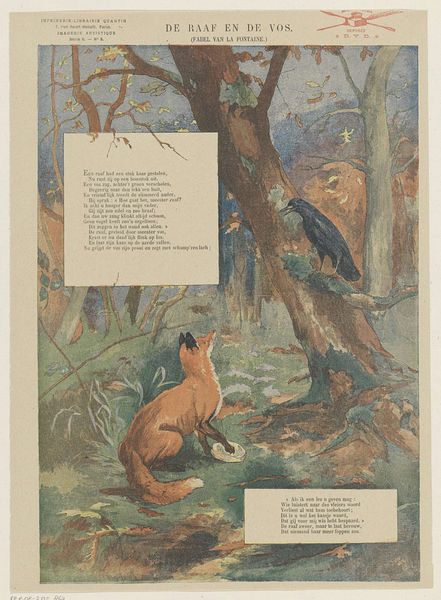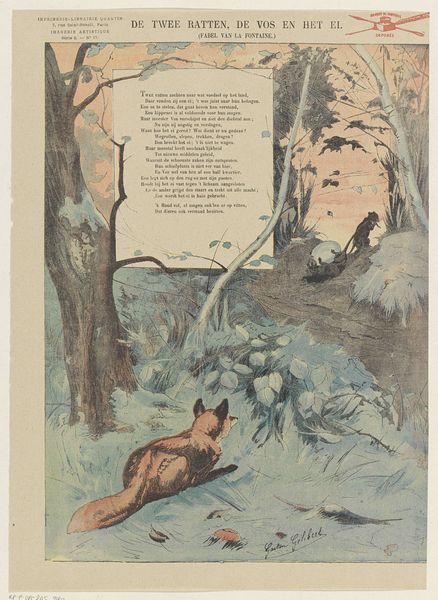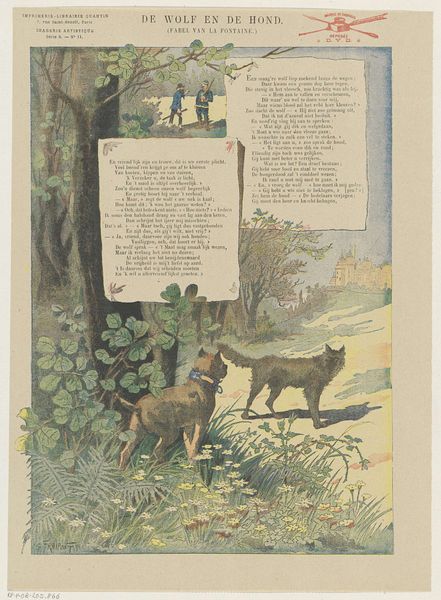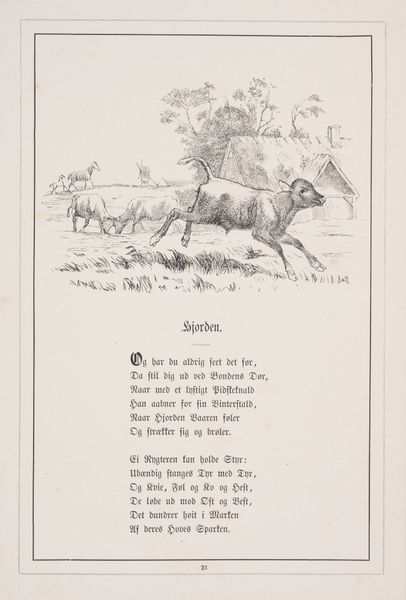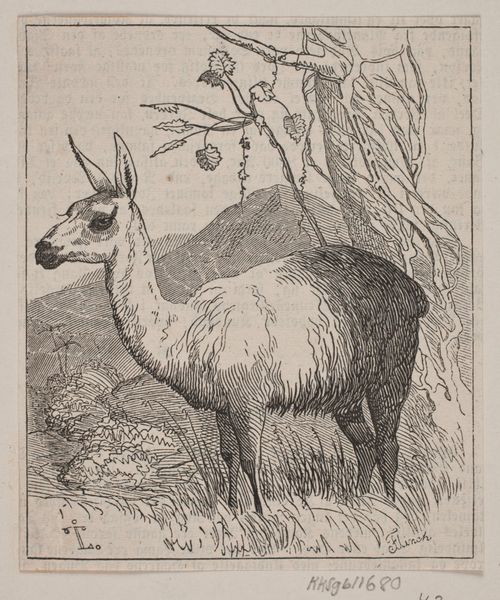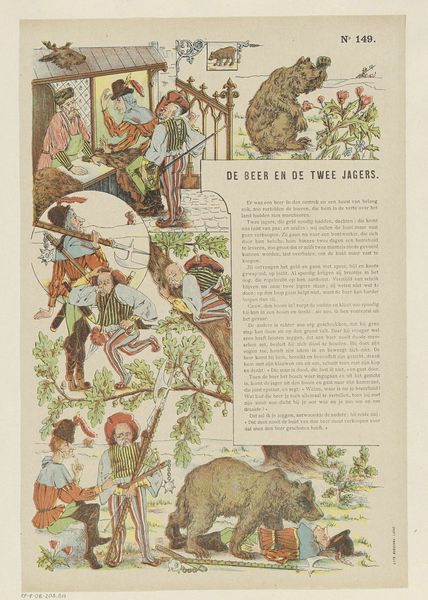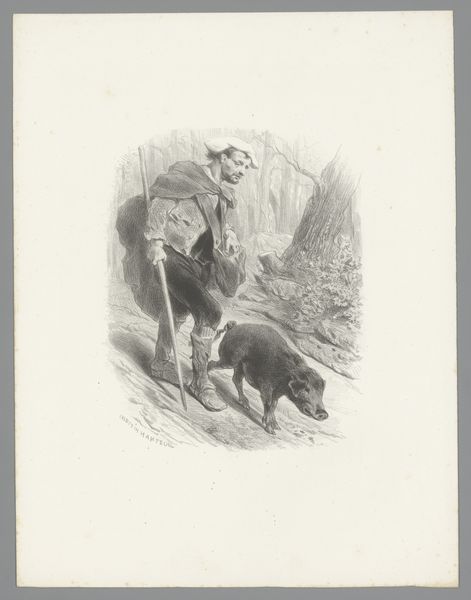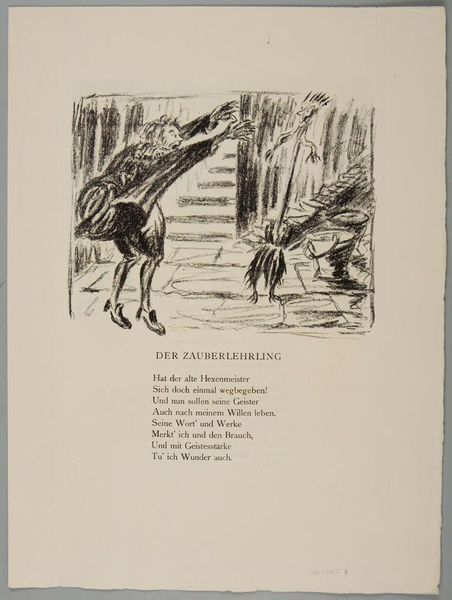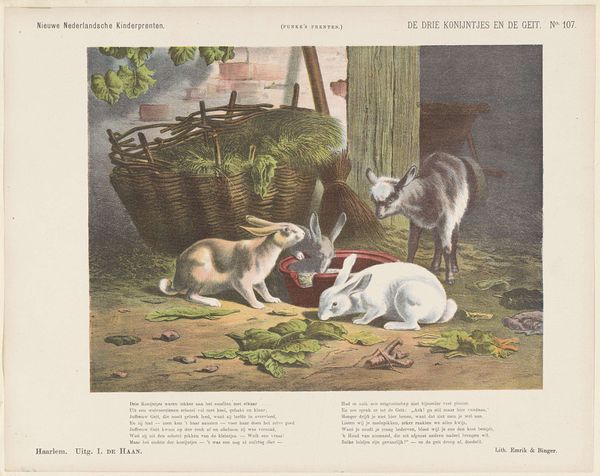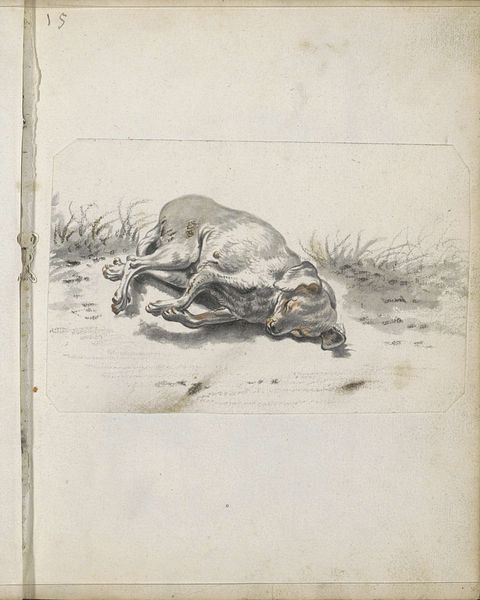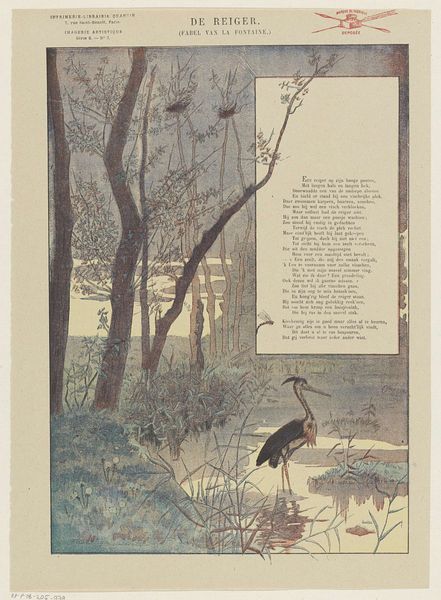
coloured-pencil, watercolor
#
coloured-pencil
#
animal
#
landscape
#
figuration
#
watercolor
#
coloured pencil
#
watercolour illustration
#
genre-painting
#
watercolor
Dimensions: height 369 mm, width 266 mm
Copyright: Rijks Museum: Open Domain
Gaston Gélibert rendered “The Hare and the Frogs” without a date, though he made it in the late 19th century, using printmaking techniques. The hare, depicted in mid-sprint, dominates the composition, its flight triggered by the presence of frogs below. The motif of the fleeing animal, seeking escape from a perceived threat, echoes through art history. I think of the deer, a symbol of timidity in medieval bestiaries, or Daphne transforming into a laurel tree to evade Apollo. But why the hare? Across cultures, it symbolizes both timidity and fertility, a duality that reveals a deeper tension. In ancient folklore, the hare’s association with the moon links it to cycles of renewal and metamorphosis. The hare's desperate flight ignites within us a primordial response, tapping into our subconscious fears and desires. It is a dance between predator and prey. And so the hare, in its perpetual flight, reminds us that these archetypes, etched in the collective psyche, resurface, transformed, yet eternally familiar, in our ever-evolving cultural landscape.
Comments
No comments
Be the first to comment and join the conversation on the ultimate creative platform.
